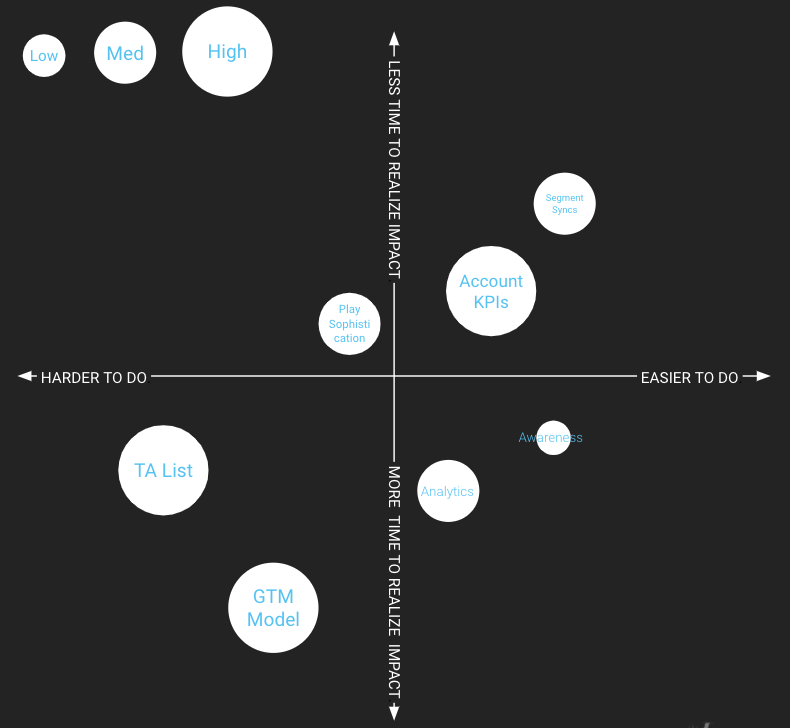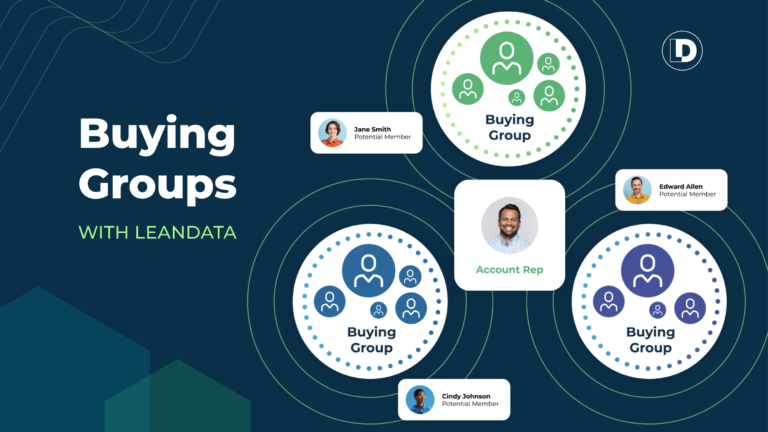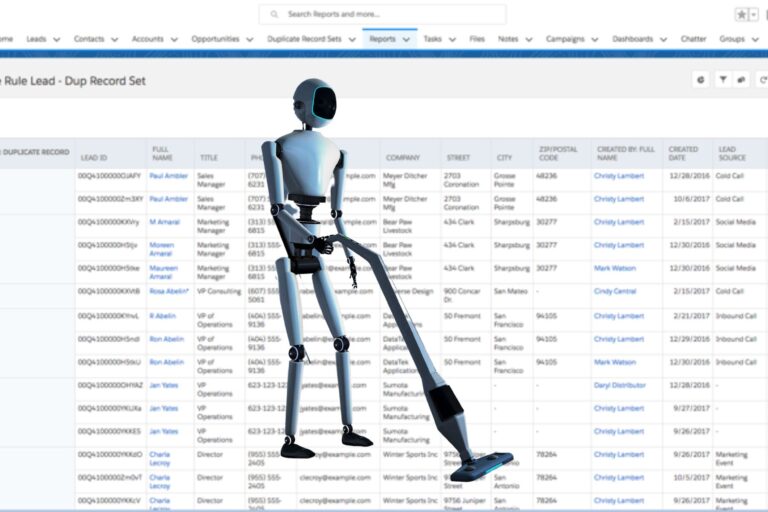The first step in an effective ABM strategy is conducting a diagnostic assessment of the current account-based status quo. Identify strengths and opportunities for improvement.
In this article, we’ll share LeanData’s experience of walking through the steps of an ABM diagnostic assessment.
Conducting an account-based strategy (ABS) assessment
Conducting an ABS In order to evaluate an account-based strategy, use both qualitative and quantitative data from stakeholder interviews, documentation, and prospecting programs across:
- Account targeting
- Prospecting skills
- Metrics
- Tech stack
- Program orchestration
- Measurement
The assessment diagnoses issues within your organization, ideally root causes of issues rather than symptoms. For example, you may be misapplying the same GTM model to different segments.
Typical recommendations from a diagnostic assessment include:
- Leverage a GTM model appropriate for engaging different account segments
- Expand and unify target account lists
- Increase orchestration and alignment between teams
- Improve measurement of account-based strategies
A one-sized GTM model does not fit all markets
In order to improve our internal ABM initiatives, LeanData recently conducted an ABM diagnostic assessment.
Historically, LeanData has excelled in its Emerging Commercial (<250 employees) and Middle Market (251-1,000 employees) segments. As such, the large majority of LeanData’s over 1,000 customers fall into those two categories.
And, while there have been noticeable big wins in the Large Enterprise segment, the qualified pipeline in the segment is often challenging.
Our ABM diagnostic assessment validated this reality. Typically, LeanData’s prospective accounts are engaged with a two-stage GTM model, combining traditional marketing programs and an active sales development team (SDRs). While a two-stage approach is appropriate for smaller commercial accounts, it does not address the complex buying cycles of enterprise accounts.
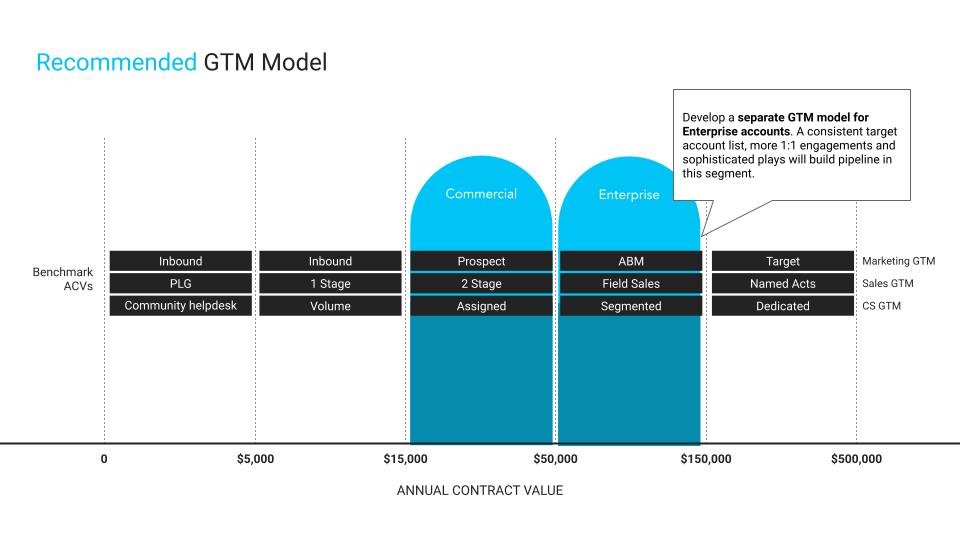
As a result, LeanData will develop a separate GTM model for Enterprise accounts. This model will include a consistent target account list, more one-to-one engagements and tailored, personalized plays. Both field sales and marketing will collaborate to create pipeline in this segment.
Over time we’ve found for enterprise companies, an Opportunity-centric motion focused on Buying Groups is more effective. This GTM motion is the natural next step of ABM.
LeanData’s ABS diagnostic score
Foundational strengths exist, and a need to deploy diverse GTM motions has been confirmed. With that in mind, where does LeanData need to improve?
The answer lies in making incremental improvements … most everywhere.
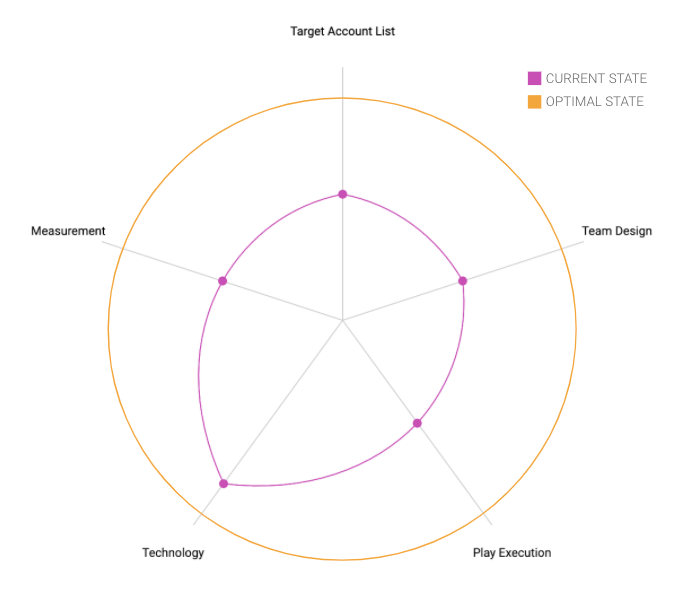
Let’s take a deeper look at four specific recommendations based on the diagnostic assessment.
Develop a consistent target account list
Typically, an organization’s targeted account list is populated with companies hand-picked by account executives (AEs). In addition, the list is interspersed with accounts showing intent based on a loose ideal customer profile (ICP).
However, A consistent, tiered, target account list developed with a data-driven approach will better engage the best customers over time.
Increase orchestration between teams
Improving alignment within internal teams involves several steps. First, AEs, SDRs and Marketing must work together to define the target account list. Next, a specific team will be assigned to meet at weekly intervals to review key performance indicator (KPI) measurements.
Mature play sophistication
Typically, SDRs conduct account research based on an ICP and then run GTM plays. However, a more mature, sophisticated approach includes value exchanges, segment targeting and revenue orchestration plays between Marketing and AEs.
Improve ABS measurement
LeanData should leverage its existing technology and account-based analytics to improve measurement of awareness and engagement within its target account list. Defined KPIs and measurement will increase pipeline generated from target accounts.
